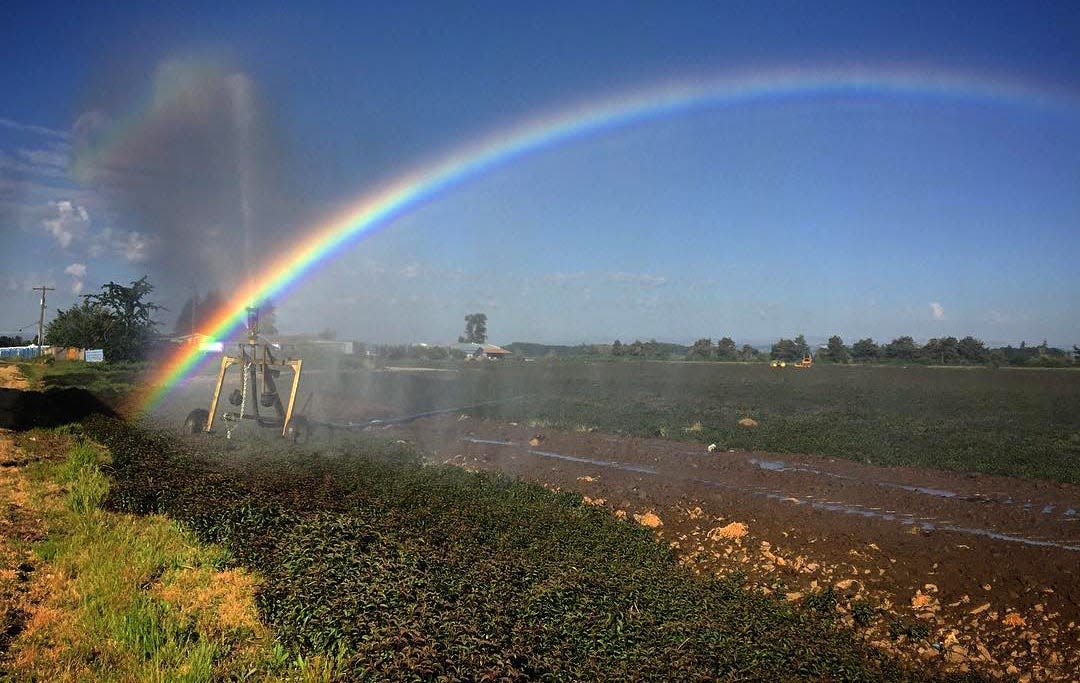Western Oregon hit with ‘flash drought,’ setting up elevated wildfire, fish concerns

If the soil in your garden felt rock hard over the past week, or you found yourself watering plants early, you’re not alone.
An abnormally hot and dry month of April — combined with extremely dry east winds — created what state climatologist Larry O’Neill described as a “flash drought” on the west side of the state.
O’Neill said the dry winds “sucked record amounts of moisture from the soil” over roughly two or three weeks during April. It has led to historically low stream flows, particularly in the Coast Range, and record-low soil moisture for this time of year, leading to the need for early irrigation.
O'Neill also noted that an unusually high number of fires from escaped burn piles popped up, something that doesn’t normally happen until later in the spring.
“This really took us by surprise,” O’Neill said. “The amount of evaporation was just off the charts. Late April is normally the peak of evaporation season, but this was a doozy. It’s a bad omen.”
Surprise drought
By most measures, Oregon should be in fine shape heading into the dry season. The state has gotten almost exactly a normal amount of precipitation for the water year and snowpack is 91-98% of normal on the state’s west side. Earlier this month, Oregon’s long-term drought was the smallest it had been since 2019.
But O’Neill said the flash drought reversed many of the positive gains. By Thursday, the U.S. Drought Monitor said 41% of the state is now abnormally dry, up from 29% a week ago, including the entire northwest part of the state.

Flash droughts are not common during April, O’Neill said. They are often more associated with heat waves, which makes this occurrence unusual, because while temperatures were warm, they weren’t historically hot.
What made this one stand out — and suck so much water from the soil — was a combination of factors. First, it was warmer than normal. Second, the air, fueled by winds coming from the dry east, were very low in humidity, which jacked up the evaporation rate. And third, trees and plants were pulling lots of water from the ground to "leaf out."
Impact of 'flash drought'
The impact of an expanding drought could hinder farming and cause water supply issues — particularly on the Oregon Coast. It could increase tree mortality, which has already been struggling in Oregon over the past decade, while bringing poor conditions for fish and wildlife. And, of course, it could mean a wildfire season that starts sooner than seemed likely earlier this year.
"Water supply for coastal cities often comes from rivers, and once they get this low at this time of year, it's just really hard for them to get back up," O'Neill said. "There is also irrigation that needs to be used earlier for farming."
Drought leads into multiple years
Drought during spring is nothing new for Oregon, of course, and the state has been in worse shape heading into late spring.
At this point, O'Neill said, Oregon just needs as much rain as possible to recharge the soil.
“The incoming rain will help a bit in the near term, but it appears the table is set for rapid drought intensification over the next few weeks in western Oregon,” O’Neill said.
NOAA’s long-term forecast is calling for a hotter and drier late spring and summer than normal.
“It really looked like this was going to be a nice normal water year and that’d we’d be in pretty good shape, but the last few weeks have been quite remarkable,” O’Neill said. “Barring unexpected continuous of cool and wet weather, I think the last two or three weeks could have a big impact on summer.”
Zach Urness has been an outdoors reporter in Oregon for 15 years and is host of the Explore Oregon Podcast. Urness is the author of “Best Hikes with Kids: Oregon” and “Hiking Southern Oregon.” He can be reached at zurness@StatesmanJournal.com or (503) 399-6801. Find him on X at @ZachsORoutdoors.
This article originally appeared on Salem Statesman Journal: Oregon sees ‘flash drought,’ setting up elevated wildfire concerns
